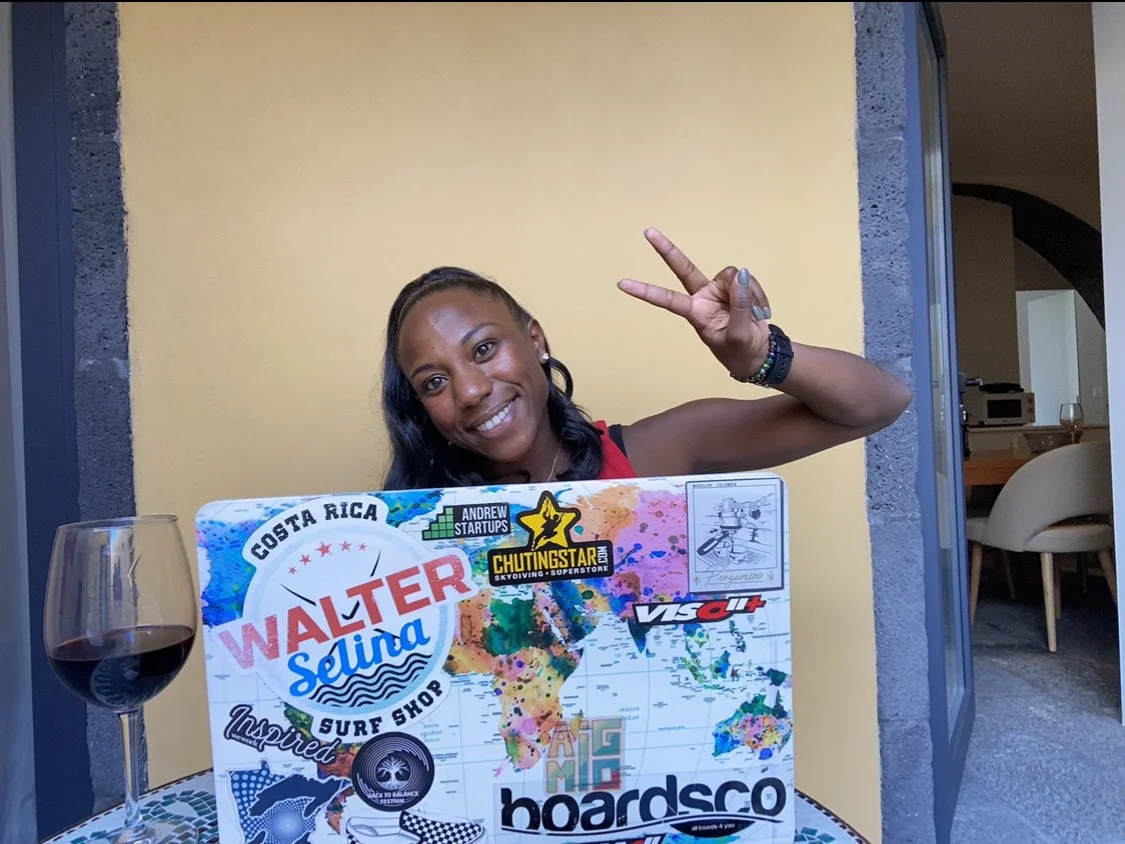In the fast-paced world of digital nomads, entrepreneurs, and remote workers, building connections can be the key to unlocking new opportunities, collaborations, and success. Whether you're networking at a co-working space, attending a virtual conference, or mingling at a global meet-up, mastering the art of breaking the ice is essential. These scenarios are unique—they often bring together diverse individuals from various backgrounds and industries, making the ability to spark meaningful conversations even more critical.
We have all experienced that awkward moment when silence fills a room and there's pressure to say something (anything). Breaking the ice at business events, weddings or meetings is often challenging but employing effective techniques can turn those tense moments into engaging conversations. In this blog, we'll highlight examples where breaking-the-ice techniques work effectively, showing how taking an effective approach leads not just to small talk but lasting connections as well.
The Power of Contextual Icebreakers
Networking Events: Where Connections Are Formed
Networking events can be sticky environments, where everyone strives to connect while simultaneously trying to avoid awkward silence. A simple question such as "What brought you here today?" may do wonders at breaking the ice and sparking conversations based on mutual interests and goals.
Team Meetings: Building Rapport Among Colleagues
In team meetings where team members do not yet know each other well, icebreakers can help foster camaraderie and collaboration among colleagues. One such technique, "Two Truths and a Lie" allows team members to share personal anecdotes lightheartedly to establish trust between members of the group. When this barrier has been broken, ideas flow more freely leading to productive discussions and strengthening team dynamics.
Social Gatherings: Turning Strangers Into Friends
Should you attend a wedding or party where you don't know many people, making small talk can often feel like climbing an impossible mountain. In such instances, humor can serve as an icebreaker. For instance a lighthearted observation related to music or food could open the way for deeper dialogue and laughter.
Sharing Experiences: Discovering Common Ground
Workshops and Classes: Exploring Together
Attendees at workshops or classes tend to share similar interests. Take advantage of this fact. Approaching someone and asking a pertinent question like, "Why did you sign up for this class?" can serve as an ideal icebreaker, and spark discussions around shared experiences as well as topics relevant to that class's subject matter.
Travel: Breaking the Ice With Fellow Adventurers
Traveling can provide an excellent platform for breaking the ice between fellow adventurers. Sharing travel experiences, tips, or quirky mishaps can create instantaneous bonds between strangers. A casual comment about an in-flight movie or query about future travel plans often leads to enjoyable exchanges and surprising friendships.
The Importance of Non-Verbal Communication
Job Interviews: First Impressions Matter
Professional job interviews can be anxiety-inducing experiences for both candidates and interviewers, which is why using icebreakers such as friendly questions or compliments on visible objects like ties or artwork on the walls are helpful in relieving tension and creating an atmosphere conducive to success for all involved. Using simple gestures such as these allows candidates to showcase their true potential without worry or stress.
Community Events: Uniting Neighbors
At community events or town hall meetings, local concerns often bring people together but can create an uncomfortable environment. A simple inquiry about experiences or opinions on recent community projects can quickly disarm barriers. Engaging everyone present in meaningful dialogue opens the way to more open conversations and community bonds are formed.
Breaking the Ice in the Classroom
Icebreakers for New Students: Creating a Welcoming Environment
When newcomers enter a classroom for the first time, it can be awkward for them to integrate with their classmates. Icebreakers provide a welcome way for all parties involved to do just that. Implementing icebreaking activities such as "Two Truths and a Lie" or an introduction circle can help students quickly gain an understanding of their classmates in a fun and engaging manner. Use a learn a latte about me worksheet to encourage students to share their interests and hobbies. These techniques not only create an inclusive atmosphere but also encourage students to identify commonalities among them and form friendships among peers. By encouraging students from diverse backgrounds and interests to share their background and interests with classmates, these methods create an inclusive setting where newcomers are welcomed with open arms.
Parent-Teacher Conferences: Building Trust with Families
Effective parent-teacher conferences require developing rapport with both parties involved, so starting conversations on lighthearted topics like their child's recent achievements or family activities is key for creating a supportive environment where parents feel more at ease when discussing needs and progress of their children. By showing a friendly approachable demeanor during conferences, teachers can foster this environment that allows parents to speak freely regarding needs and progress of their children.
Staff Meetings: Building Team Cohesion
Breaking the ice at staff meetings can greatly boost teamwork and collaboration among colleagues. A fun fact sharing session or creative question like, "If you could dine with any historical figure from history, who would it be?" can provide an engaging starting point that sets a positive atmosphere within a group, leading to more productive discussions while further developing professional relationships between team members.
Breaking the Ice With Your Significant Other's Family
Initial Meetings: Establishing a Lasting Impression
It is key that when meeting the family of your significant other for the first time, setting an appropriate atmosphere. Beginning a conversation in light-hearted fashion or sharing humorous personal anecdotes or complementing their home decor helps break through any initial awkwardness, creating an open dialogue.
Family Gatherings: Finding Common Interests
At family gatherings such as holidays or birthdays, finding common interests is the key to successful interaction between you and your partner's relatives. Engaging them in conversations about food being served or traditions being observed can open doors to more meaningful dialogue. Finding common hobbies or favorite shows helps build rapport and allow family members to include you more fully into conversations, making you feel more at home within their dynamic.
Conclusion
With human connection becoming ever more crucial in modern society, mastering the art of breaking the ice can open up endless opportunities for meaningful interaction. From professional settings to social events, the techniques mentioned can be employed with finesse to create authentic bonds between strangers. Don't shy away from awkward moments, embrace them with appropriate icebreakers and you may just discover an abundance of conversations waiting to be had. Ice may be cold, but relationships warm hearts.



















